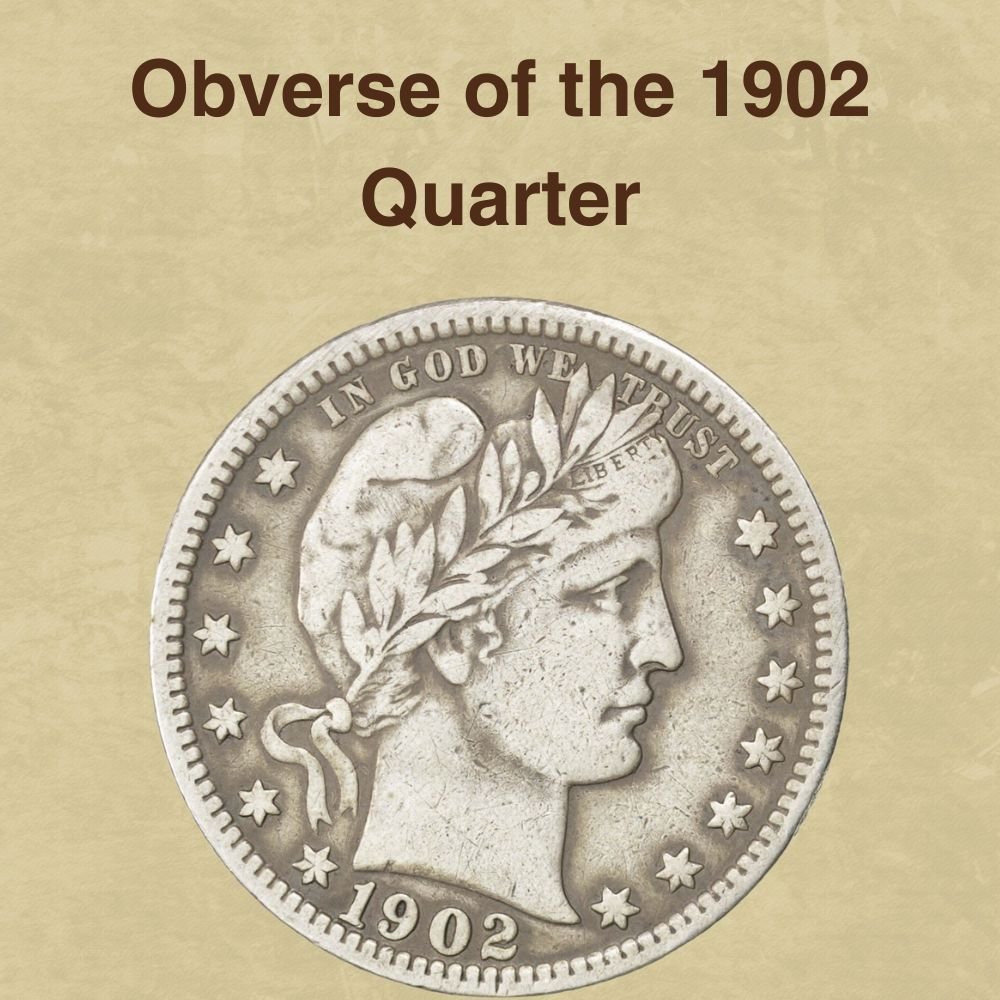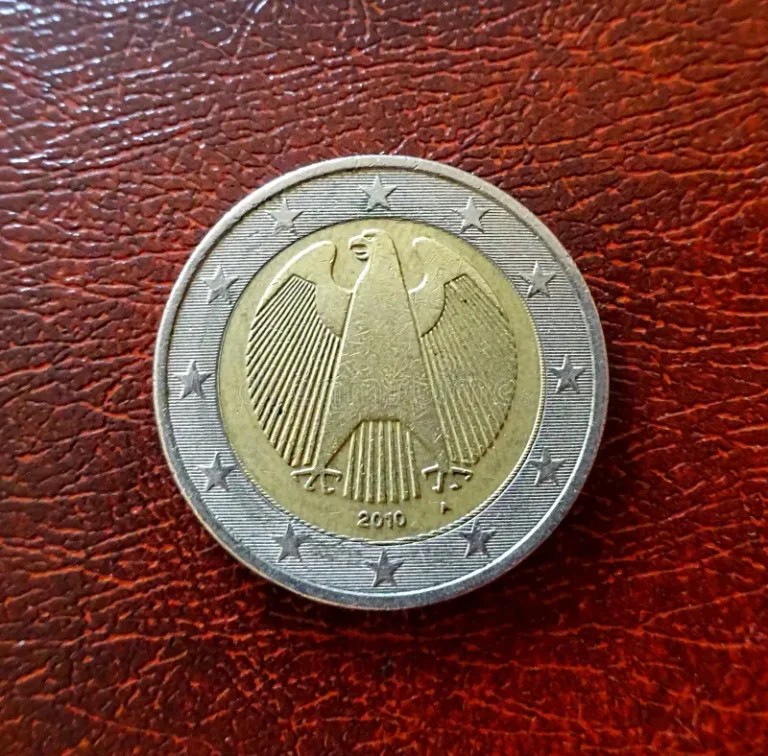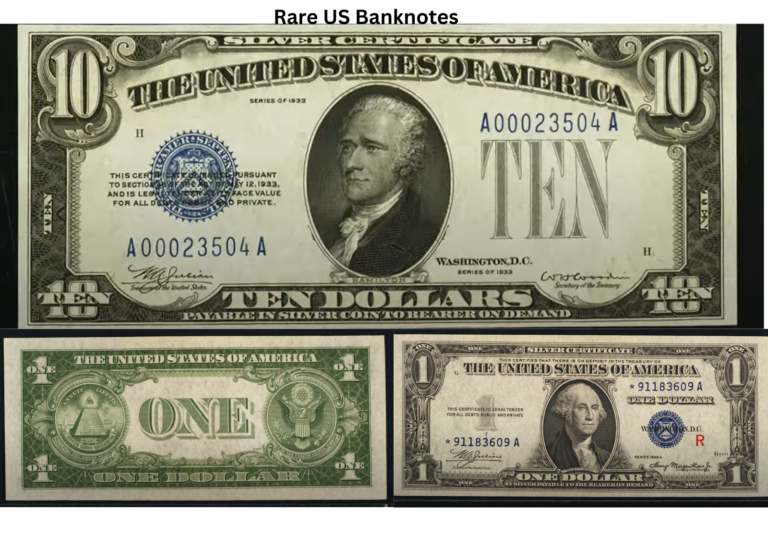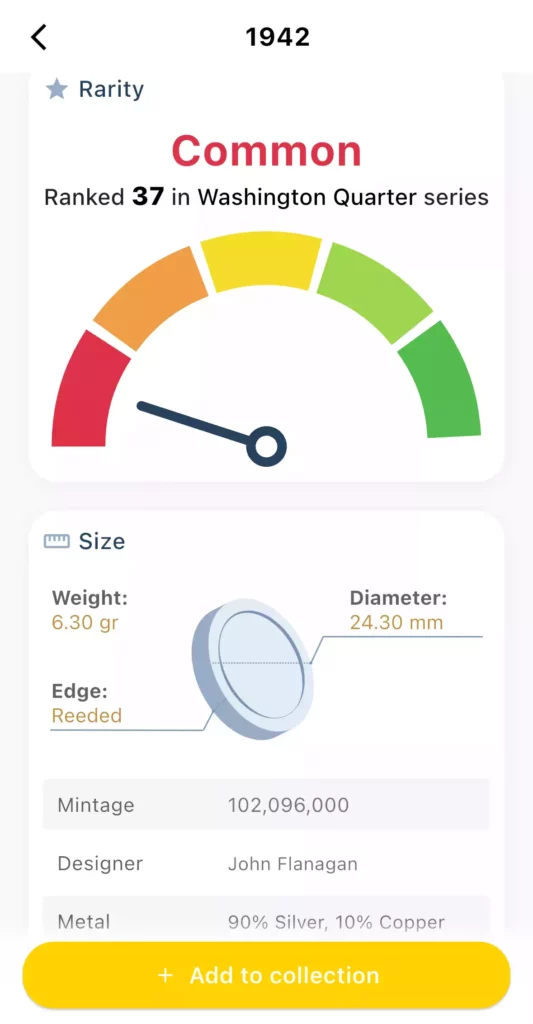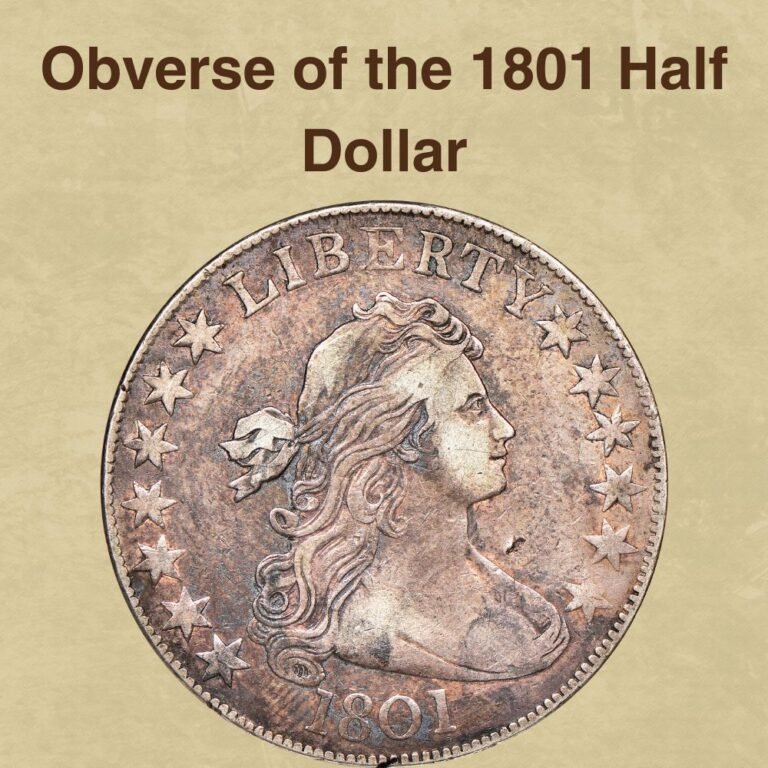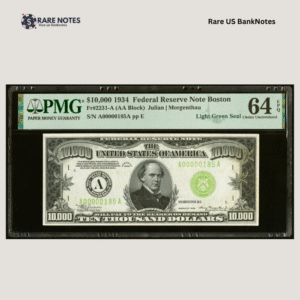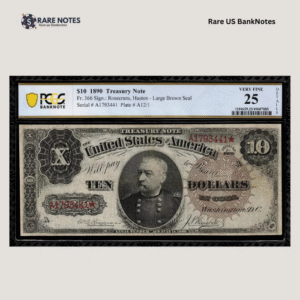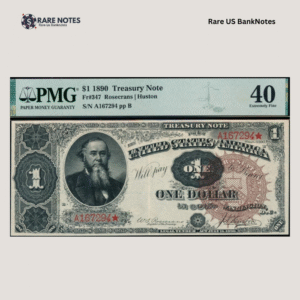How much is a 1902 quarter? Is a 1902 quarter worth collecting? If you’re building a Barber quarters collection or you’ve come across one dated 1902, you’re probably curious whether it’s worth any money. Despite having one of the highest mintages in the entire series, the 1902 issue can be a fantastic addition to any collection, especially if found in Mint State.
Our guide will explain everything you need to know about the 1902 quarter value. We’ll take you through the history of the Barber quarter series, key features of the 1902 quarter, and tips for authenticating and grading your silver coin. Lastly, you’ll discover minting errors that can add value to this common date.
Let’s get started and find out: how much is a 1902 quarter worth today?
1902 Quarter Value Chart |
||||
| Mint Mark | Good | Fine | Extremely Fine | Uncirculated |
| 1902-No Mint Mark Quarter Value | $20 | $30 | $80 | $11,500 |
| 1902-O Quarter Value | $25 | $75 | $185 | $22,500 |
| 1902-S Quarter Value | $25 | $85 | $225 | $23,500 |
| 1902- Proof Quarter Value | – | – | – | $14,500 |
History of the 1902 Quarter
The 1902 quarter has the second-highest mintage in the entire Barber Quarters series. The Barber coinage series, which was minted from 1892 to 1916, replaced the much-criticized Seated Liberty design, which was deemed to have too much of an English influence and was therefore looked down upon in the United States.
It was not until 1890 that President Benjamin Harrison signed a law authorizing all U.S. coins to be eligible for redesign 25 years after a coin was first produced. This paved the way for the inception of new coinage that would replace the Seated Liberty design.
Later in 1890, the United States Mint hired a new director by the name Edward Leech, who was very supportive of redesigning U.S. coinage. Soon after his appointment, he organized a competition inviting elite artists to submit proposals for the new coin design, but only the winner would be rewarded with a $500 cash prize. Because only the winner would be rewarded, the invited artists stayed away from the competition.
Pressed for time and running out of options, Leech enlisted Barber to help in designing the new coins. Their working relationship throughout the design process was fraught with tensions, with Leech repeatedly refusing to approve Barber’s design ideas. Eventually, after several iterations, Leech approved Barber’s design and presented it to President Harrison for approval in late 1891, paving the way for production the following January.
Except for the dimes dated 1902, most mintages, including those in 1892, were generally high. This trend of high mintage production continued well into the 1900s. Minted at the Philadelphia, New Orleans, and San Francisco Mints, the 1902 quarter is plentiful in circulated condition but rare in Mint State and Gem condition. If you are building your Barber’s Quarters collection based on dates, the 1902 quarter is an important piece in completing your set.
Also read: Top 13 Most Valuable State Quarters Worth Money
Features of the 1902 Quarter
Let’s now look at the features of the 1902 Barber quarter. By understanding these features, you can authenticate and grade your silver coins more accurately, and even identify Barber quarters that are worth good money.
Here are the standout features to look out for:
Obverse of the 1902 Quarter

The “heads” features Liberty’s right-facing portrait in which she wears a Phrygian hat decorated with a laurel with LIBERTY etched at the front.
The national motto, IN GOD WE TRUST, is inscribed above Liberty’s profile while the date, 1902, is etched at the bottom along the rim.
Liberty’s portrait is encircled by thirteen stars, six on the right and seven on the left, representing the first states to join the Union.
Numerous, tiny denticles decorate the entire coin’s circumference around the rim.
Reverse of the 1902 Quarter

The “tails” shows an image of the heraldic eagle. A shield on the eagle’s breast represents strength in the unity between the federal government (represented by the horizontal lines at the top) and the state government (the vertical stripes at the bottom). It is also a symbol of non-aggression.
The eagle holds an olive branch in its left talon, representing peace, while the arrows in the right talon symbolize victory and self-defense.
In addition, the eagle clutches a flag in its beak with the Latin inscription, E PLURIBUS UNUM, which means “Out of Many, One.”
Above the eagle’s head is a constellation of stars representing the thirteen states that first joined the Union.
The inscriptions, UNITED STATES OF AMERICA, are etched at the top along the rim while the denomination, QUARTER DOLLAR, is shown at the bottom.
Similar to the obverse, small denticles decorate the rim on the reverse.
Other Features of the 1902 Quarter
Additional notable features are:
- Diameter: 30 millimeters
- Weight: 30 grams
- Edge: Reeded
- Metal Composition: 90% Silver, 10% Copper
- Fineness: 9
- ASW: 1808oz
Also read: Top 16 Most Valuable Modern Quarters Worth Money
1902 Quarter Value Guides
Now, onto the big question: How much is a 1902 quarter worth? The value depends on the coin’s condition, mintmark, mintage, and rarity.
We’ll look at the three varieties of the 1902 quarter plus the proof:
- 1902 No Mint Quarter
- 1902-O Quarter
- 1902-S Quarter
- 1902 Proof Quarter
Let’s find out how much each is worth.
1902 No Mint Quarter Value

With a mintage of 12,196,967 1902 quarters, the Philadelphia Mint struck the second-highest number of quarters in the entire Barber Quarters series. Circulated examples are heavily worn but common in all grades, although the population starts to dwindle in grade Fine (F).
Here’s what to expect when collecting 1902 quarters:
- Circulated Examples: These are plentiful, although finding nice survivors can be a bit difficult as examples become scarce in grade Fine (F) and higher. In Good (G) condition, examples can sell for about $20 and up to $30 in Fine (F). The prices double at Extremely Fine (XF), with pieces selling for up to $80. About Uncirculated (AU) examples are scarce and can fetch as much as $235.
- Mint State Examples: Uncirculated examples are scarce in lower grades and increasingly rare in higher grades. In particular, pieces graded MS64 and higher can be challenging to find but rewarding nonetheless. In MS60, expect at least $270 apiece and as much as $550 in MS63. Examples graded MS66 can sell for as much as $3,000, while scarce MS67 pieces will command up to $11,500.
- Auction Record: In a 2006 sale, Heritage Auctions sold an MS67 1902 quarter for an impressive $23,000, making it one of the most valuable examples of this type.
1902-O Quarter Value

The mintage at the New Orleans Mint dropped to 4,748,000, but this was still a generous number of silver coins. However, 1902-O are scarce, except in lower grades, which can be attributed to low initial collector demand in these coins until the mid-1930s, when the hobby gained mainstream interest. As such, Mint State examples are scarce to rare, while Gems are extremely difficult to find.
Here’s a breakdown of the value of 1902-O quarters:
- Circulated Examples: These are common until grade Fine (F), after which the population of worn examples declines steadily. Examples in Good (G) condition are plentiful and can sell for about $25, while Fine (F) examples are worth up to $75. Extremely Fine (XF) examples are scarce and will fetch at least $185, while even scarcer About Uncirculated (AU58) examples can sell for up to $550.
- Mint State Examples: Uncirculated examples are scarce in lower grades and become extremely scarce in grade MS63 and higher. In MS60, pieces sell for as much as $600, and prices shoot up to at least $1,000 in MS62. Examples graded MS63 are rare, commanding as much as $1,350 and up to $2,100 in MS64. Gems are genuinely rare, fetching premiums of up to $12,500 in MS66 and $22,500 in MS67.
- Auction Record: In 2015, Heritage Auctions sold a rare MS68 for an impressive $28,200, one of the most valuable 1902-O quarters.
1902-S Quarter Value

In 1902, the San Francisco Mint drastically increased its production of Barber quarters from a mere 72,000 in 1901 to a whopping 1,524,612 in 1902. The 1902-dated quarters are relatively scarce in lower grades and even harder to find in Mint State. As with most dates in the Barber quarters series, nice examples of the 1902 quarters can be challenging to find—most survivors display a poor strike on each side of the coin.
So, how much are 1902-S quarters worth? Here’s what to expect:
- Circulated Examples: Worn examples are common in lower grades up to Fine (F), after which the population begins to dwindle. Examples in Good (G) condition can sell for as much as $20, while Very Good (VG) examples are worth up to $35. Fine (F) pieces are worth about $85, while the scarcer Extremely Fine (XF) examples can fetch as much as $215. About Uncirculated (AU) quarters are more challenging to find, but can command prices of up to $800 in AU58.
- Mint State Examples: These are scarce but still very collectible. Lower grade specimens are easier to find, but the prices can be increasingly prohibitive in higher grades. In MS60, a quarter can sell for as much as $950 and up to $1,500 in MS63. Gems in MS65 are increasingly rare as reflected by their higher prices of as much as $4,400, up to $10,000 in MS66, and at least $23,500 in MS67.
- Auction Record: In a 2008 auction, Heritage Auctions sold an MS67 for a record-shattering price of $29,900.
1902 Proof Quarter Value

About 700 proof Barber quarters were minted at the Philadelphia facility in 1902. Although proof examples are plentiful, they lack the high degree of contrast between frosted devices and brilliant surfaces seen in previous dates. Instead, most survivors display a satiny patina on the devices, and only a few qualify to be graded as cameo. Deep or Ultra Cameo examples of 1902 proofs are unknown.
Here’s a breakdown of how much these proofs are worth:
- Regular proofs: The population of regular proofs is enough to satisfy collector demand. Examples graded PF60 are worth about $415, and these prices double to about $880 in PF63. Proofs graded PF66 and higher are rare but can command premiums starting from $4,100 in PF66 to as much as $14,500 in PF68. In a record-shattering auction in 2021, Heritage Auctions sold a PF68 for a remarkable $22,800.
- Cameo (CAM): These are scarce and become rarer in higher grades. In PF64, specimens will sell for as much as $1,600 and up to $4,200 in PF66. Cameo examples graded MS67 can command up to $7,500. In an auction in 2021, Heritage Auctions sold a PF67+CAM for a record-breaking $16,800.
1902 Quarter Grading
To grade a 1902 quarter, you’ll need to pay attention to the design details, luster, and wear on high-contact points. Like most dates in the Barber quarters series, the 1902 quarters have a weak strike, but be careful not to confuse this with wear.
In particular, assess the areas that wear fast, including the inscription LIBERTY in the headband, the hair above Lady Liberty’s forehead and behind her ears, as well as the shield on the eagle’s breast, talons, wings, and tail feathers.
In addition, examine the coin for the presence of mint luster. Lower grade examples have a dull surface with little to no luster, while About Uncirculated and uncirculated specimens will have some of that original shine.
Check out this video for more tips on grading Barber quarters.
Rare 1902 Quarter Errors List
Several minting errors show up in the 1902 Barber quarters series. Not all errors are valuable, but some are worth adding to your collection.
Here are a few minting errors to check out:
1. 1902-S Quarter Re-punched Mintmark Error
Re-punched mintmark error occurs when the mintmark is punched into the working die more than once at slightly different angles, resulting in a doubled mintmark. This error is worth about $50-$100, depending on the coin’s condition. For example, in 2018, a collector on eBay paid $200 for a 1902-S quarter graded Fine (F) with a re-punched mintmark error.
2. 1902 Quarter Obverse Die Break Error
Die breaks are common on 1902 quarters struck in Philadelphia. Due to the high mintage, dies used to strike these coins wore out and broke more frequently, resulting in die breaks. This error occurs when the cracks on the die’s surface are filled with small metal pieces, and the cracks are then impressed on the coin. Larger, more dramatic die cracks can add $50-$100 to the regular value of your Barber quarters. For example, an eBay collector paid $180 for a 1902 quarter graded Extremely Fine (XF) with a large obverse die crack error.
Also read: 17 Most Valuable Quarter Errors Worth Money
Where to Sell Your 1902 Quarter?
Now that you know the value of your coins, do you know where to sell those coins online easily? Don’t worry, I’ve compiled a list of these sites, including their introduction, pros, and cons.
Check out now: Best Places To Sell Coins Online (Pros & Cons)
FAQs
How much is a 1902 quarter worth today?
The value of a 1902 quarter depends on the mintmark, mintage, and the coin’s condition. Prices of worn examples range from $15 to $800, but can go as high as $23,500 or higher for Mint State examples.
How can you tell if a 1902 quarter is real or fake?
To authenticate a 1902 quarter, compare its key features, i.e., diameter, weight, edge, color, and design elements, with authentic examples or images from reputable sources such as the Professional Coin Grading Service (PCGS) or the Numismatic Guaranty Company (NGC).
Is a 1902 quarter worth collecting?
Yes. 1902 Barber quarters can be quite valuable, especially in Mint State, and can greatly improve the value of your collection. Although uncirculated examples are scarce, if you’re fortunate enough to come across one, it could be worth a fortune.
The post 1902 Quarter Coin Value (Errors List, “O”, “S” & No Mint Mark Worth) appeared first on CoinValueChecker.com.


